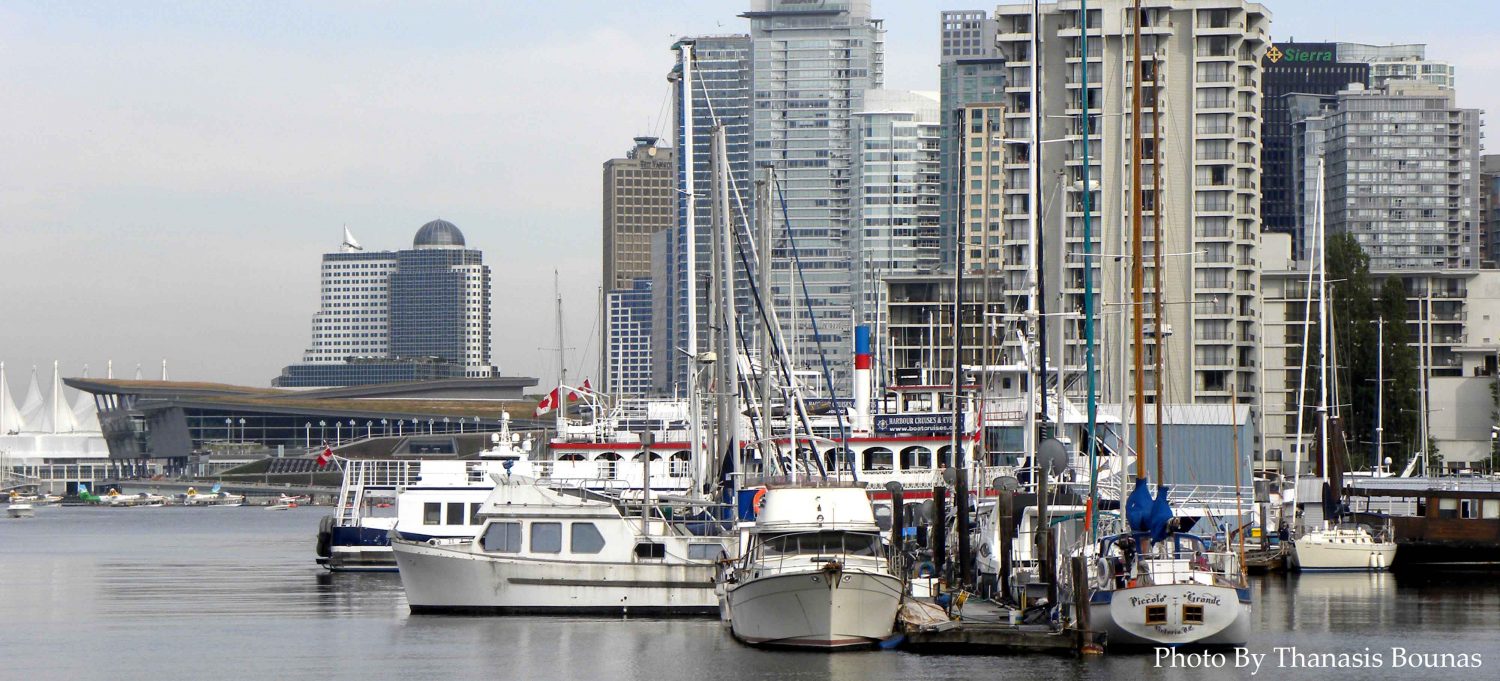
A Gateway on the Waterfront
In the heart of downtown Vancouver, British Columbia, Canada, the Hornby Street Dock has long served as a vital link between the city’s urban core and its surrounding waterways.
Located along the False Creek waterfront, near the foot of Hornby Street, the dock connects residents and visitors to Granville Island, English Bay, and beyond.
While it is now known for leisure and scenic ferry rides, its roots stretch deep into the city’s maritime history.
Early Days of the Waterfront
In the late 19th century, Vancouver’s shoreline was a hive of industrial and maritime activity.
False Creek, once a tidal inlet fringed by forests and mudflats, became a busy harbor filled with shipyards, mills, and warehouses.
The area around Hornby Street was central to this transformation — a place where steamships docked, and workers loaded goods for trade.
The first wooden piers in the area were modest, but they laid the groundwork for what would become the Hornby Street Dock.
The Rise of Transportation and Trade
By the 1920s, Vancouver had established itself as the leading port city of the Pacific Northwest.
Hornby Street’s waterfront grew busier as ferries, barges, and small transport vessels carried passengers and goods across False Creek.
These docks became essential for commuters and workers traveling between downtown Vancouver and industrial sites on the south shore.
It was an era when the city’s growth depended as much on the water as on the railways.
Transformation and Urban Renewal
As the decades passed, False Creek underwent dramatic change.
By the 1970s, industrial use declined, and the area was reimagined as a space for recreation, culture, and housing.
The Hornby Street Dock was redesigned to serve not as a freight pier, but as a passenger terminal — connecting to Granville Island via the False Creek Ferries and Aquabus.
This shift reflected Vancouver’s broader urban philosophy: turning former industrial spaces into accessible, people-centered places.
The Dock Today
Today, the Hornby Street Dock is one of the busiest public piers on False Creek.
Commuters, tourists, and locals board small ferries that weave through the city’s inlets, offering views of Vancouver’s skyline, bridges, and marinas.
It serves as both a transportation hub and a scenic landmark, blending modern urban convenience with the timeless rhythm of the water.
The dock’s design — simple, functional, and surrounded by public space — symbolizes the city’s seamless balance between work and leisure.
Architecture, Design, and Accessibility
Modern upgrades have made the Hornby Street Dock more sustainable and inclusive.
Accessible ramps, covered waiting areas, and improved safety systems ensure that everyone can enjoy Vancouver’s waterfront experience.
The surrounding seawall paths invite walkers and cyclists to explore the harbor, while nearby cafés and art spaces enrich the sense of community.
It is a dock not only for boats, but for people — a living connection between city and sea.
In Reflection
The history of the Hornby Street Dock in Vancouver, British Columbia, Canada, mirrors the city’s own evolution — from a working waterfront to a world-class urban destination.
What began as a simple industrial pier has become a welcoming gateway to the waterways that define Vancouver’s character.
To stand on its deck today is to look back through layers of history — where commerce, community, and creativity continue to meet at the water’s edge.







Be the first to comment